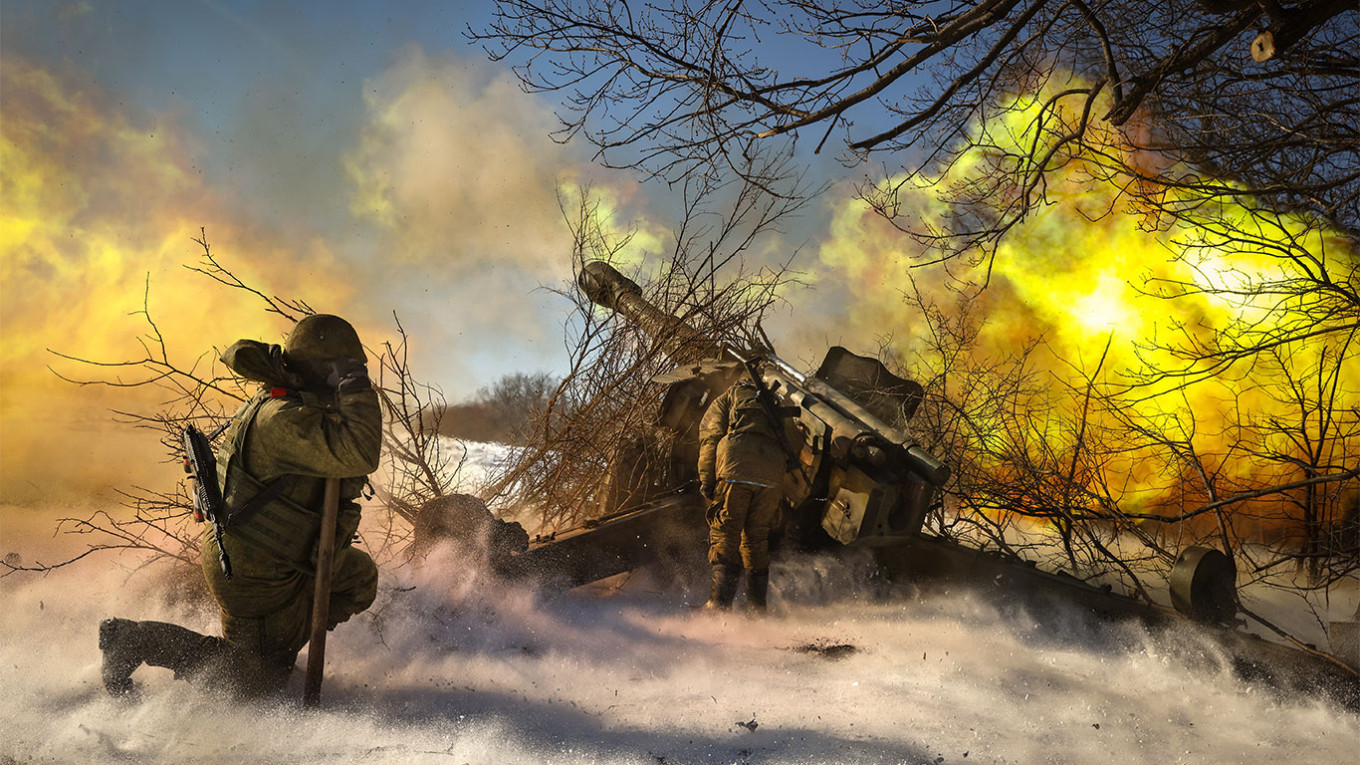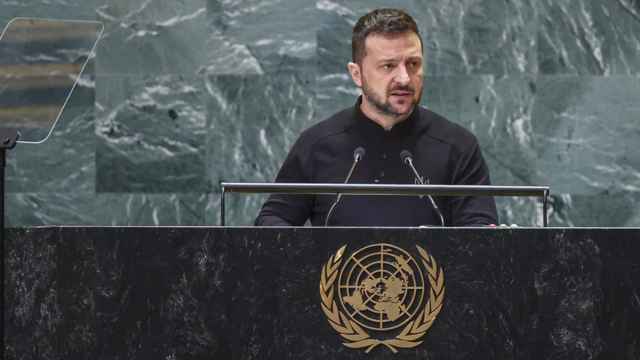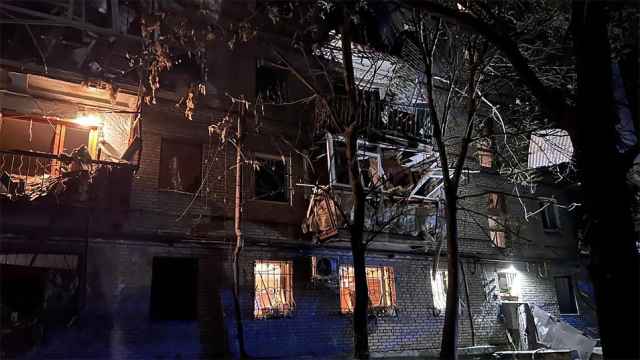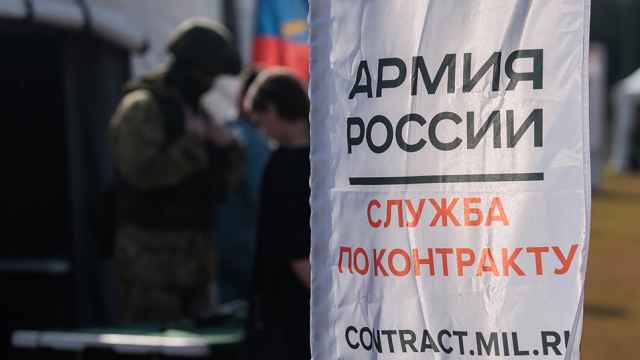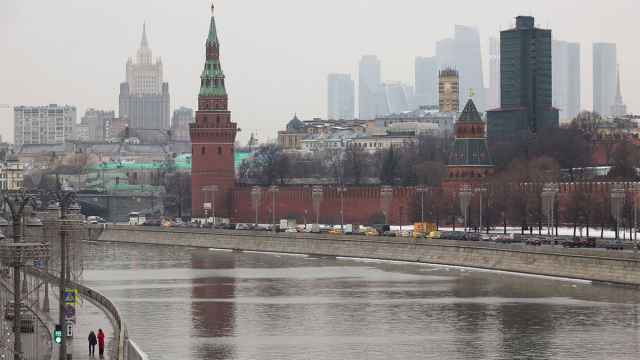Russia’s invasion of Ukraine one year ago has led to the deaths of thousands of soldiers and Ukrainian civilians — as well as radically reshaped Russia’s social, political and economic fabric.
The Moscow Times has produced a series of graphs to illustrate the changes that have taken place over the past year:
Reports of heavy Russian troop losses were seen on the first day of the invasion, when up to 190,000 soldiers crossed onto Ukrainian soil from three directions in the pre-dawn hours of Feb. 24, and remained high throughout the ensuing months.
Later strategic adjustments — such as President Vladimir Putin’s “partial” draft and Kremlin-linked tycoon Yevgeny Prigozhin’s recruitment of prisoners into the Wagner mercenary company — are thought to have provided a slight boost to Russia’s manpower.
But in the year since Russia launched what it calls its “special military operation” in Ukraine, Western officials estimate that as many as 180,000 Russian — and 100,000 Ukrainian — troops may have been killed or wounded.
Ukraine places Russia’s battlefield losses at 144,270 as of Feb. 20, 2023, while Russia’s own figure of under 6,000 confirmed deaths has remained unchanged since September.
With each side careful to play down their own losses while playing up the enemy’s, independent Russian media started tallying the numbers based on graveyard sightings, obituaries and public announcements across Russia’s regions.
Their figure currently stands at 14,709 confirmed Russian military fatalities in Ukraine as of Feb. 17.
The United Nations has confirmed 18,955 civilian casualties of Russia’s attack as of Feb. 21, 2023, which includes 8,006 killed and 13,287 injured Ukrainians. Among them are 487 children killed.
Ukrainian national police estimates 16,502 civilian deaths — excluding the unknown number of residents of Mariupol, which was reduced to rubble after three months of Russian bombardments and eventual capture in May.
Western sources say between 30,000-40,000 Ukrainian civilians have lost their lives in the war.
Russian officials regularly play down the economic impact of the invasion of Ukraine and laud state banking and financial steps that blunted the impact of Western sanctions.
But positive economic signals that include receding consumer price growth and record oil and gas revenues have come alongside plummeting banking profits and a record budget deficit.
A Yale University team of experts that compiled a comprehensive list of over 1,000 international businesses and organizations that quit Russia says the exodus is “catastrophically crippling the Russian economy.”
The business withdrawal has reversed nearly three decades' worth of foreign investment, according to Yale’s School of Management, and domestic production — already suffering from supply shortages — has no capacity to replace the lost products and talent.
“Looking ahead, there is no path out of economic oblivion for Russia as long as the allied countries remain unified in maintaining and increasing sanctions pressure against Russia,” the study’s authors have said.
As the war forced more than 8 million Ukrainians to flee their country, its impact away from the frontline also drove more than half a million Russians from their homes.
While ideological and economic motivations underpinned the first wave of departures last spring, Putin’s partial draft orders in the fall triggered another mass departure of mostly military-age men across the borders.
Kremlin officials were said to have placed the figure at 700,000 Russians who fled in under two weeks after the mobilization's announcement, drawing comparisons to periods of mass migration following the 1917 Bolshevik Revolution and the Soviet collapse of 1991.
The scale of the exodus has reached such proportions that Russian lawmakers are now debating whether to incentivize their compatriots to return or punish them with asset seizures.
The past year has been marked by the worst political repression in Russia’s modern history, with 200,000 websites blocked, over 21,000 activists detained and around 6,000 criminal and administrative cases opened under wartime censorship laws.
Out of the 442 defendants whose cases were tracked by the police monitoring group OVD-Info, 94 have been sentenced by the courts, while others either await their verdicts behind bars or in exile.
And while 58 defendants have been fined or received suspended sentences, 22 are serving real prison sentences of up to seven years.
One-third of the criminal cases are linked to social media activity, which coupled with a police crackdown on protest activity has had a chilling effect on anti-war speech.
“The public has largely adapted to wartime pressure, which was inevitable,” prominent human rights lawyer Pavel Chikov said recently.
A Message from The Moscow Times:
Dear readers,
We are facing unprecedented challenges. Russia's Prosecutor General's Office has designated The Moscow Times as an "undesirable" organization, criminalizing our work and putting our staff at risk of prosecution. This follows our earlier unjust labeling as a "foreign agent."
These actions are direct attempts to silence independent journalism in Russia. The authorities claim our work "discredits the decisions of the Russian leadership." We see things differently: we strive to provide accurate, unbiased reporting on Russia.
We, the journalists of The Moscow Times, refuse to be silenced. But to continue our work, we need your help.
Your support, no matter how small, makes a world of difference. If you can, please support us monthly starting from just $2. It's quick to set up, and every contribution makes a significant impact.
By supporting The Moscow Times, you're defending open, independent journalism in the face of repression. Thank you for standing with us.
Remind me later.



